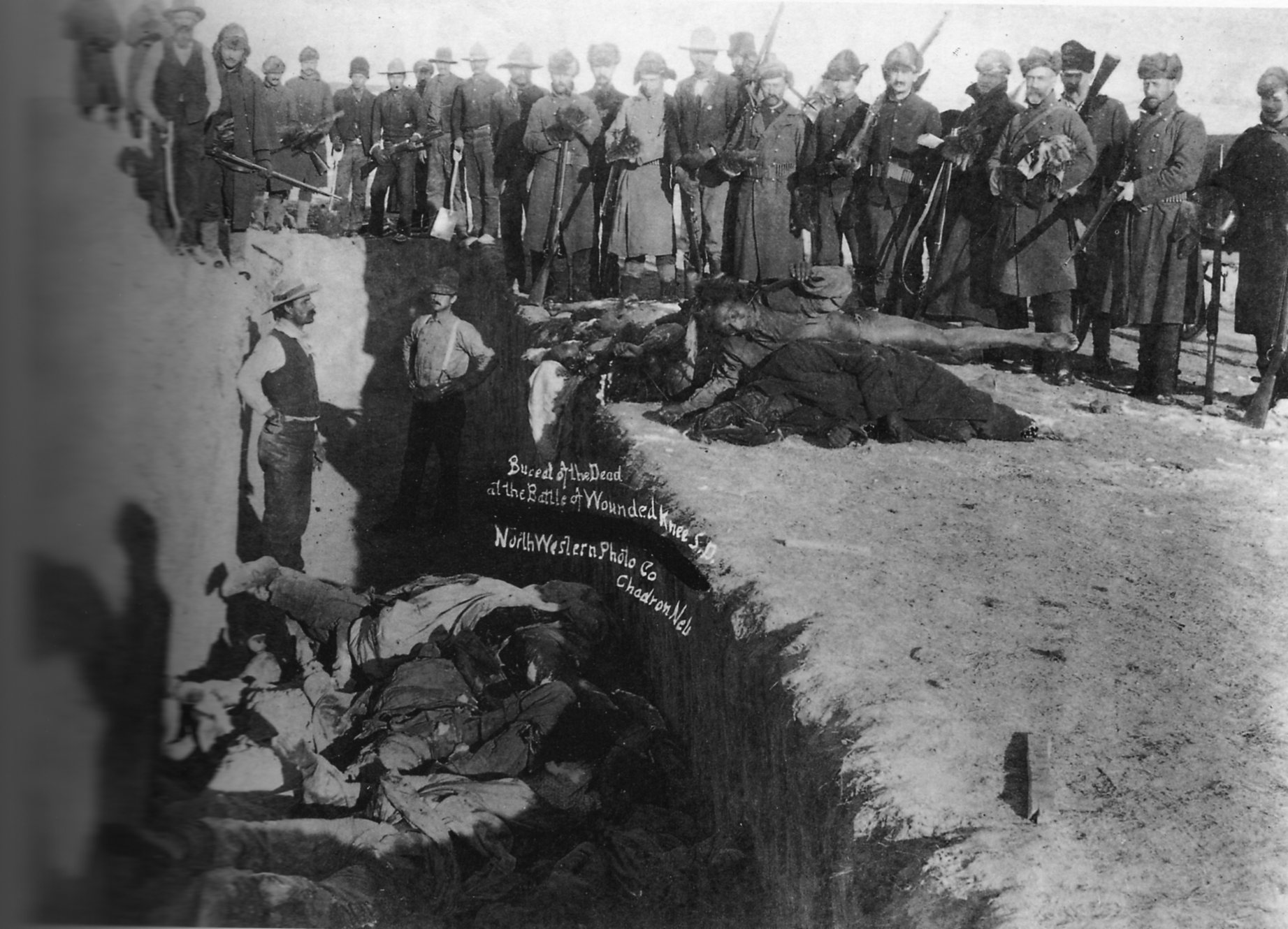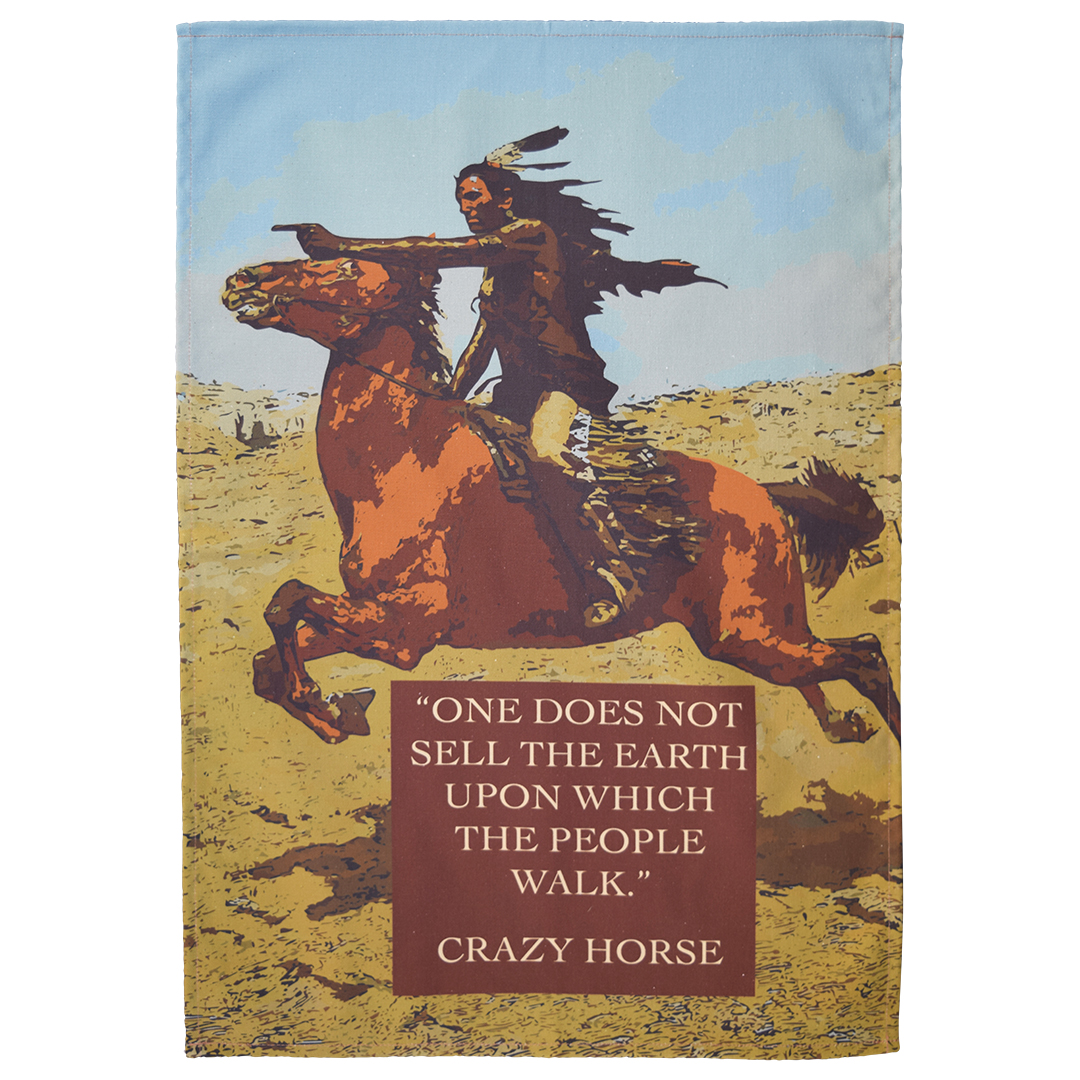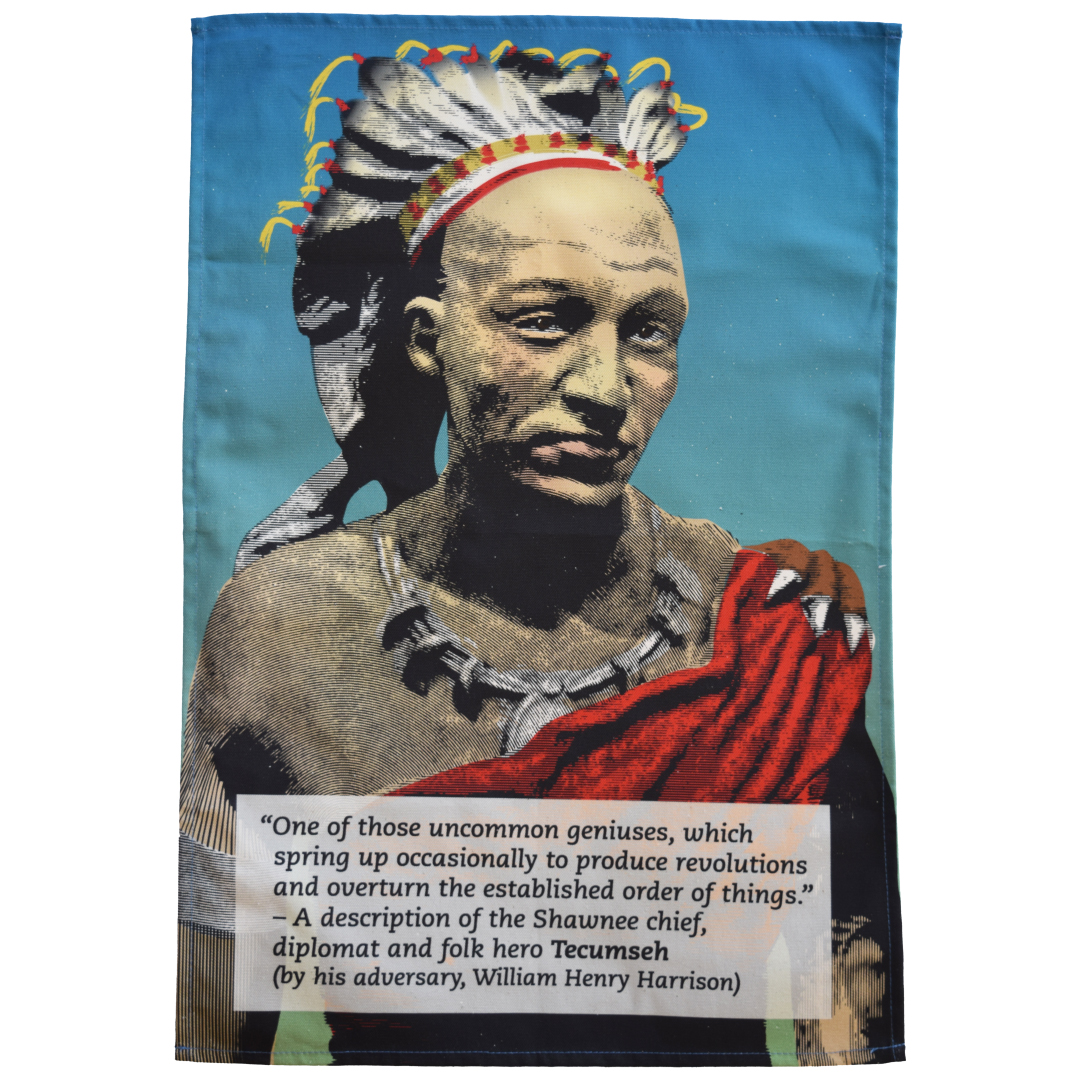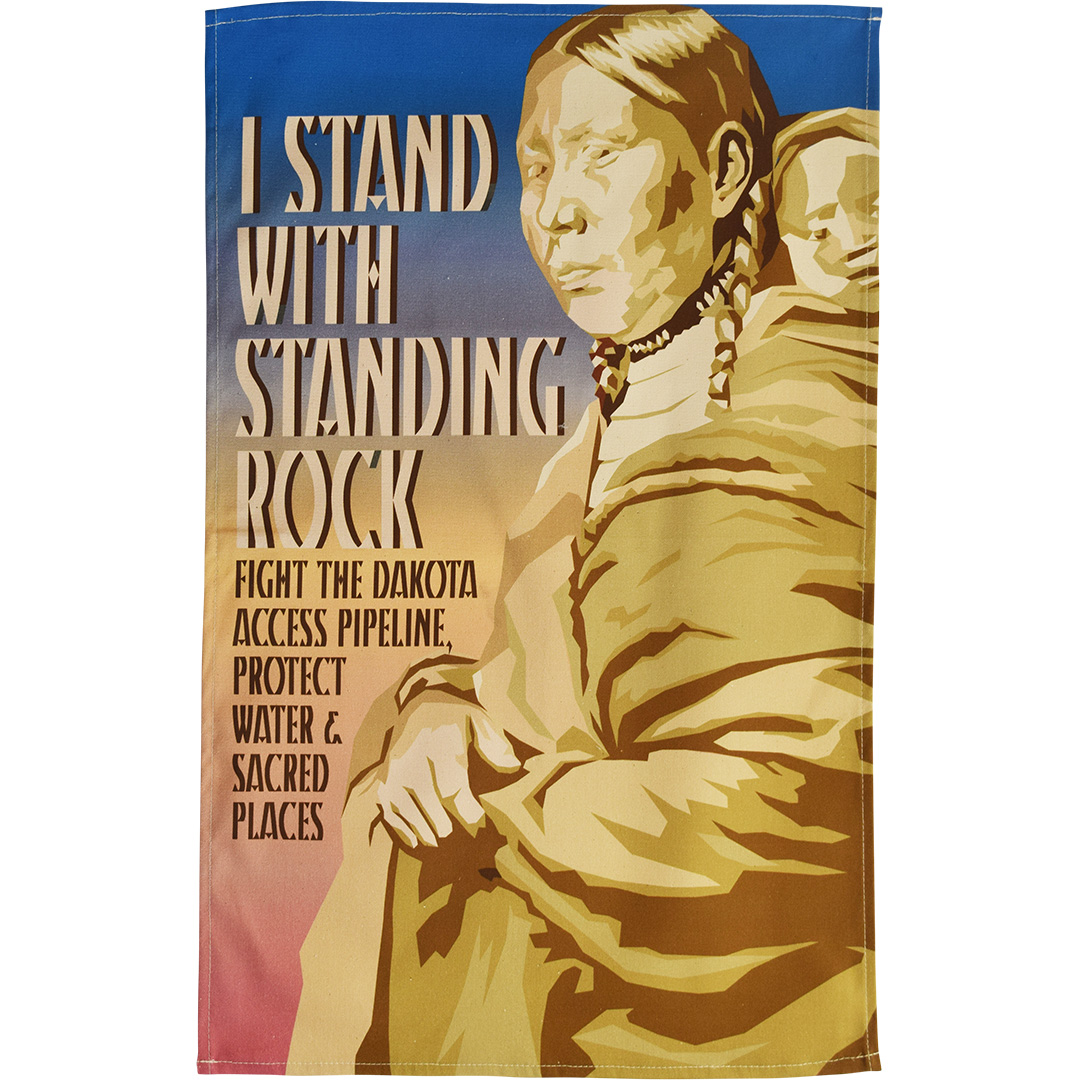Something Else Died There: The Wounded Knee Massacre
Posted by Pete on Dec 15th 2022

In December 1890, U.S. soldiers committed one of the worst massacres in American history...
“Many innocent women and children who knew no wrong died here.”
The Wounded Knee Monument
In 1890, just a few days after Christmas, soldiers of the U.S. 7th Cavalry Division massacred a group of Lakota Indians at Wounded Knee Creek in South Dakota.
In less than an hour, 84 men, 44 women, and 18 children were killed. At least 7 more Lakota were mortally wounded.
Then, soon after the massacre, no fewer than 20 of the perpetrators were awarded the Congressional Medal of Honor for their part in it.
Crazy Horse was a Lakota war leader who was murdered by U.S. soldiers in 1877, thirteen years before the Wounded Knee Massacre
Click to view our Crazy Horse tea towel
The Wounded Knee Massacre is often taken to mark the end of the so-called American Indian Wars – the genocidal conquest of indigenous North America over three centuries.
By 1890, the major campaigns of armed resistance had all been defeated. Tecumseh fell in the War of 1812, and Crazy Horse had been murdered by U.S. soldiers soon after his victory at the Battle of the Little Big Horn.
Native America was conquered and colonised. The United States had won.
But Native Americans were still there, ready to resist.
In Lakota lands, which were being seized by the U.S. government, news spread of a Paiute prophet called Wovoka.
He had a vision that Jesus Christ had returned to Earth as a Native American. The colonisers would disappear, and Lakota ancestors would lead their people to rich new hunting grounds.
This new religious movement became associated with its ritual “Ghost Dance”, and it scared the living daylights out of local white settlers, most of them living on stolen Lakota land.
They urged the army to move against the Lakota, and move it did.
Tecumseh was one of the leading warriors in the fight against the expansion of the United States onto Native American lands
Click to view our Tecumseh tea towel
On 28 December 1890, 350 Miniconjou Lakota led by Spotted Elk were intercepted by a 7th Cavalry unit while travelling to Pine Ridge Agency.
A half-Lakota scout advised the commander not to immediately disarm Spotted Elk’s men, as that could lead to violence.
Instead, the tribe was escorted a few miles west, to Wounded Knee Creek, and ordered to make camp for the night.
Over the next few hours, more U.S. cavalry arrived. By morning, there were 500 soldiers surrounding the camp of 350 Lakota – 230 men and 120 women and children.
The next morning, 29 December 1890, the U.S. commander, Colonel James Forsyth, ordered his men to disarm the Lakota.
The Lakota were hopelessly outnumbered. Any effort to fight would endanger their families, so of course they complied.
But one deaf man, Black Coyote, was not made aware of what was happening.
The fight to protect Native American land continues to this day, recently focusing on protests over the Dakota Access Pipeline
Click to view our Standing Rock tea towel
When the U.S. soldiers came to seize his gun, his fellow Lakota warned them that he was deaf and confused. But the troops kept assaulting him, and a gun fired off.
This was all that was needed for the U.S. cavalrymen, raised on racial and cultural hatred of Native Americans, to launch into an indiscriminate massacre of the Lakota.
Four heavy artillery guns opened fire on the tipi camp, which was full of unarmed civilians.
Some of the Lakota men were able to grab their rifles back from the soldiers and return fire, but they were completely outgunned.
The violence was horrific. One Lakota, Black Elk, remembered:
“I did not know then how much was ended. When I look back now from this high hill of my old age, I can still see the butchered women and children lying heaped and scattered all along the crooked gulch as plain as when I saw them with eyes still young. And I can see that something else died there in the bloody mud, and was buried in the blizzard. A people's dream died there. It was a beautiful dream.”
That dream was freedom, justice, liberation. A future for Native Americans beyond European and U.S. colonialism.
Part of that dream may have died at Wounded Knee. But it also, despite everything, lives on.
In struggles such as the American Indian Movement, launched in 1968, and the ongoing campaign to have the 20 Medals of Honor awarded for the Wounded Knee Massacre rescinded, the Native American fight for justice endures.



